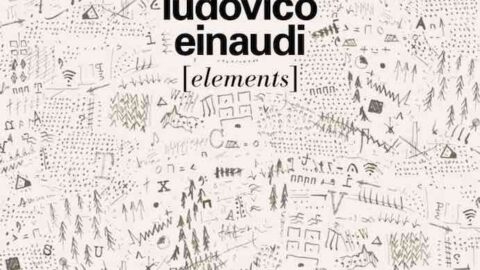Upon a first listening, Ludivoco Einaudi’s Elements begins as a promising journey through an enticingly-meditative soundscape with a warmth and friendliness that well-balanced strings and keyboards can provide. After several listenings, however, the overall sound world turns cold and saccharine. The music can easily be mistaken as a soundtrack to a luxury car commercial, a financial services industry touting its latest 529 college savings plan, or even, more crassly, theme music for the latest erectile dysfunction medicine (with a claw-foot tub and all).
Is it the predictable entrances of layer after layer of conservatively orchestrated strings and keyboards? Is it the pristine treatment of diatonic harmonies? Undulating minor thirds that explode into arpeggios? Taken in total or individually, the presentation of these musical elements draw less attention to themselves and point more to what they could possibly signify; like, for example, the hand-stitched leather and glimmering control panel of the latest Mercedes.
Released through Ponderosa Music and Art and Real World Studios, Elements isn’t all commercialistic fodder, though. Deep inside the album are two tracks that reveal internal narratives that belie some of the sugary sweets of rest of the album. Take Whirling Winds for example, which despite its comforting arpeggiation and layering, maintains an A pedal tone throughout that creates a dramatic tension as the harmonies whirl around this fundamental pitch.

Similarly in its emphasis of a single pitch as a focal point is Twice where a dissonant E-flat pokes out only to be resolved to D several times but in a more unpredictable manner. The distinction of these examples from rest of the album, although clearly heard, are still subtle and the overall timbres and textures maintain the album’s homogeneity.
Aside from Einaudi at the piano is the accompanying force of the Amsterdam Sinfonietta (in Night, Four Dimensions, Elements, and Whirling Winds) which add to this overall pristine texture. Even when some tracks use the Rhodes piano (like Numbers and Elements), the change in color doesn’t overwhelm Einaudi’s simple and direct modes of expression. Surprisingly, some tracks like Numbers and Twice appear to offer interesting coloristic contrasts with instruments such as the bolacha, zabumba, calebasse (played by percussionist Mauro Refosco), or the kalimba and glockenspiel, yet any coloristic details are lost. The use of percussion is subtly mixed as extensions of the melodic and harmonic homogeneity of the keyboards and strings.
Maybe this is exactly what is “elemental” to this album: musical expression should be direct and pristine, only to be understood exactly the moment it first hits your ears. But if you keep listening, don’t be surprised if you all of a sudden feel compelled to test drive the latest in luxury automobiles.
























